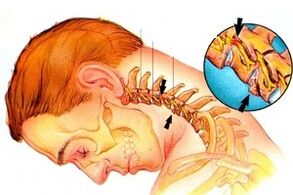
Musculoskeletal diseases are one of the most common diseases on earth.Few people manage to avoid them completely, especially after 40 years, although experts admit that problems with the spine, muscles and joints are “younger” and very young people are increasingly complaining about pain.
The guilt is the way of life that many have already become known: inactivity, longer stay in one position (mostly behind devices and monitors), lack of physical activity.As a result, the attitude is disturbed, salts and other harmful substances in the body accumulate, the functions of the musculoskeletal system are impaired, and as a result, internal organs can be deformed.
Most of the time, osteochondrosis is found from such diseases in which people are exposed to the lumbar and cervical spine under osteochondrosis problems.The second most common frequency type of osteochondrosis, cervical, is an unpleasant illness and also - progressive, without treatment, a significantly deteriorated lifestyle up to the disability.This means that it is necessary to recognize the symptoms of this disease in good time and to contact an orthopedic surgeon or vertebrologist for treatment in time.
How cervical osteochondrosis develops
If a person heads a sitting lifestyle or due to their profession in the same position is in the same position for a long time, the risk of fulfilling osteochondrosis is very high.With the development of the disease, changes in intervertebral discs occur, they are deformed and change their structure.
There are between the vertebrae between the vertebrae.Your task is to maintain the spine to make it flexible and durable.There are seven vertebrae in the neck with which the help of the head is carried and turned, the neck, etc.The cervical vertebrae are very close together, so they are injured and even moved by minor physical exertion.The risk of the disease lies in the fact that the nerve endings of the vertebral nerves are affected, which affects the vessels that provide the brain of the brain.In return, the brain does not get any important substances, and this can lead to the development of a number of other serious diseases that can cause disability and even the patient's death.
There are many causes and development of cervical osteochondrosis.The following can be distinguished among the most common and most common reasons:
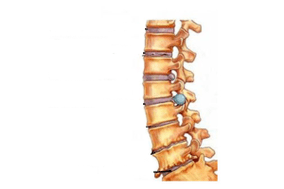
- Impaired metabolism in the body, especially in the cervix region, hormonal imbalance;
- Salt deposit;
- low physical activity, sedentary lifestyle;
- long stay in a pose (on the computer, the steering wheel of the car, etc.);
- improper nutrition;
- Obesity;
- Injuries and bruises of the neck;
- Settlement of the body.
Osteochondrosis also occurs against the background of chronic diseases of the movement apparatus system, such as scoliosis or rheumatism.
In addition, osteochondrosis often leads to a genetic predisposition of the body.
But whatever the causes, osteochondrosis must be treated as soon as their first symptoms occurred.
Signs of cervical osteochondrosis
Osteochondrosis in this spine is not always sharp and unexpected.Most of the time it develops slowly and the symptoms intensify over time, their number increases.The more the vertebrae are damaged and the nerve roots are damaged, the clearer the signs are.
The first symptom to which you have to pay is the pain of different strength in the cervical spine, the other parts of the body - the back of the head, forehead, ears, the forearm, shoulder, chest, etc.When pain, consult a doctor to determine whether it is really osteochondrosis, which is often similar in other diseases.
Other signs of osteochondrosis
- The pain in the neck is reinforced by loads or cints of the head;
- The patient feels numbness, burning or tingling in the limbs;
- Headache and dizziness, loss of strength are common, the patient can complain about darkening and stains in the eyes;
- If you suddenly turn your head, a fainting is likely.
The cervical osteochondrosis is also characterized by:
- lack of coordination;
- Pain in the heart area;
- Determination of vision and hearing.
Types of osteochondrosis
Depending on the type of trapped nerve and the type of disease, doctors differentiate between different syndromes:
- radicular syndrome;
- Wirting artery syndrome;
- Heart syndrome.
With radicular syndrome, the first couples of neck nerve nuclear ends.Pain can be felt on the neck and radiate on the shoulder blade, the lower back, the shoulder and the forearm.
In the vertebral artery syndrome, the patient feels throbbing pain in the back of the head or in the temples or a burning pain in the neck, back of the head, which is reinforced when the head is turned, while sleeping, when coughing and in the chest and shoulder.
In cardiac syndrome, the symptoms initially resemble angina pectoris, but the pain does not disappear after taking nitroglycerin, last for several hours and can intensify when moving and deep.
Symptoms of damage to certain vertebrae
The treatment of osteochondrosis is prescribed depending on which nerve ended.There are a total of eight of them, each of them is above the cervical vertebra.You can determine which vertebrae are affected by the symptoms that correspond to a certain nerve root.
Damage of the nerve end and its characteristic pain
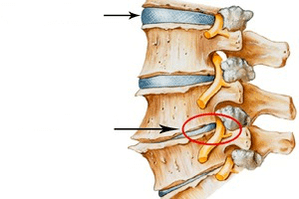
- first and second sections: limited sensitivity of the back of the head, pain in the vertex and back of the head area;
- third section: numbness in the neck in the pinched area, speech disorders, sensitivity of the tongue;occurs very rarely;
- Fourth section: pain and numbness in the collarbone and/or in the shoulder, diseases of the airways, pain in the heart area;
- Fifth section: pain in the shoulder, pain in the outer surface of the shoulder, limited sensitivity of the limbs;
- Sixth and seventh section: pain in the neck, shoulder blade, forearm, back, lower back, limited sensitivity of the hands and fingers;most common lesion;
- Eighth section: pain in the neck, back, elbows, deaf feeling of the little fingers of all extremities, cyanosis of the legs and hands due to poor blood circulation, lack of skin sensitivity, radiation into the legs.
Diagnosis and treatment of cervical osteochondrosis
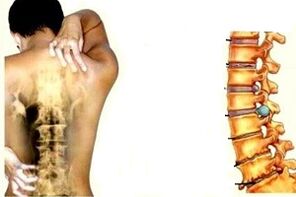
In order to reliably determine the diagnosis of "cervical osteochondrosis", you must definitely consult a doctor.Many symptoms of osteochondrosis are similar to the signs of other diseases.Therefore, it is not only important in time to start the treatment of osteochondrosis, but not to miss a different pathology.
In the event of suspicion of osteochondrosis and the sign of a clamping of the nerve end, the doctor prescribes radiography with data errors or magnetic resonance imaging, ultrasonic additional Dopplerography and duplex scanning.
Based on these studies, you can determine the type of pain syndrome and the entirety of other symptoms which panes are damaged and begin the necessary treatment that the affected vertebrae and nerve roots can restore and cannot develop complications of osteochondrosis.
The treatment is prescribed by the doctor, it is usually complex.First, it should relieve pain symptoms that are sometimes practically unbearable with cervical osteochondrosis and not only spread to the throat, but also to other parts of the body.
Use pain relievers in tablets, but with excessive pain, non -steroid antoiding medication as well as warming and painkillers are not displayed.
Because medication and ointments only relieve pain and other symptoms of the neck osteochondrosis, but do not eliminate their cause.After the pain has decreased, the patient is prescribed massages, physiotherapy and physiotherapy.The patient prescribes a diet to improve blood circulation and support the body functions in tablet form and injections as well as chondroprotectors that contribute to protecting and restoring the intervertebral disc tissue.
In some cases, the patient is prescribed bathrooms, paraffin baths, reflex zone massage and hirudotherapy as an additional treatment.Traditional methods for the treatment of cervical osteochondrosis often help the patient to return to a normal lifestyle, but they should only be used in combination with traditional methods and after consultation with a doctor, since traditional medicine can have contraindications and the use of their recipes can damage an organism that has already been weakened by the disease.
Complications and prevention of the disease
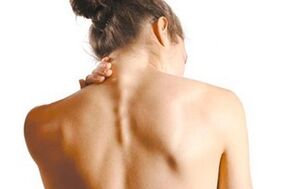
Don't forget: the treatment of cervical osteochondrosis should be started as soon as possible.The longer you wait with a visit to the doctor, the more difficult it will be to heal the disease, and in the meantime there are various complications.An osteochondrosis of the cervical spine is very dangerous because there are many blood vessels and nerve mesh in this section that supply the brain.
Each disorder can lead to problems with the blood flow to the brain and neurological disorders, including migraines and high blood pressure, and the heart, the airways, hearing and eyesight affect.
When you start with an osteochondrosis, more serious consequences are possible in the form of cerebral ischemia, a stroke of the spine or radiculopathy - an illness in which processes form on those affected that partially or completely or completely use the sensitivity and mobility.However, this is not the worst, since in severe cases of osteochondrosis the spinal cord is compressed, which can lead to the patient's death.
It is therefore very important to listen to the symptoms as early as possible and contact a specialist who helps you to return to a fulfilling life.And in order to avoid an illness like cervical osteochondrosis, you have to move more, not avoid physical activity, monitor your weight, eat healthy and balanced and regularly visit an orthopedic surgeon or vertebralist.



























